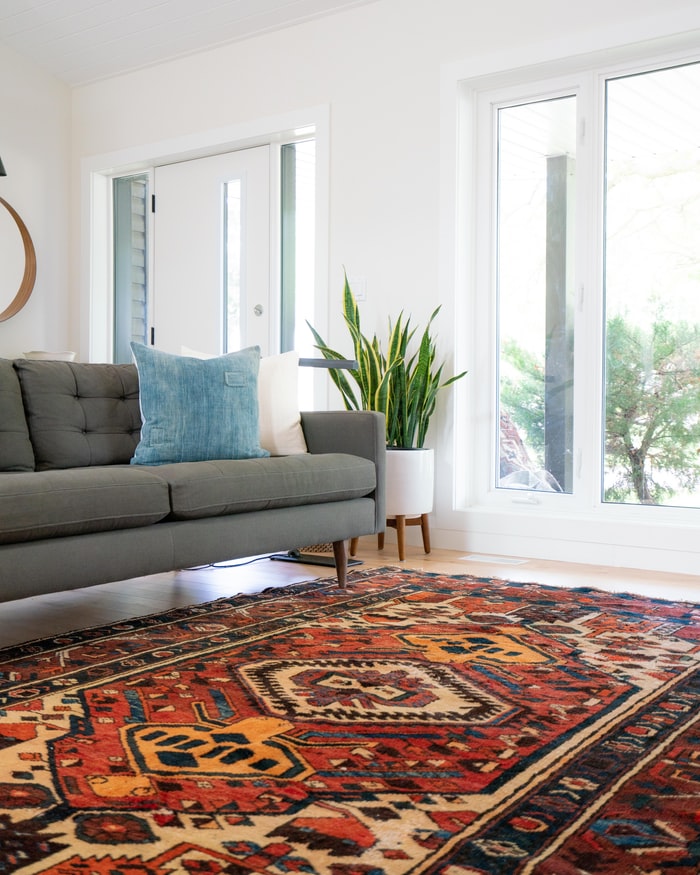The quality of a rug can be judged on its knots. And while Persian and oriental rugs are typically woven with just two different knots it is the amount of knots that can determine a rugs quality.
Two Main Knots
Persian rugs (Iranian carpets) are usually woven with two different knots. The symmetrical Ghiordes knot which is also used in Turkey and the asymmetrical Senna or Persian knot which is used in India, Turkey, Pakistan.
According to Wikipedia the term ‘Senneh knot’ is a bit ‘misleading as rugs with symmetric knots are made in the town of Senneh’.
The main difference between Oriental and Persian rugs is their knots. Oriental rugs use the Ghiordes style whereas the Persian typically uses the Sennah knot.
The Mirriam-Webster dictionary defines a Ghiordes knot as ‘a knot used in making carpets and rugs in which the two ends of the pile yarn appear together at the surface between the two adjacent warp yarns around which they are twisted’.
The Senneh, Senna or Sehna, knot is different in that ‘the yarn ends appear at the surface with one on each side of the adjacent yarns of warp around which they are twisted’.
It is known that the asymmetric Senneh knots allow for a more fluent style of design with flowing curves whereas the symmetric Ghiordes knot is best suited for the more rectilinear designs. Although, it should be pointed out that it is not the type of knot used that will determine the final look and quality of the rug but the skills and craftmanship of the weaver.
There is a third type of knot called the Jufti knot. You will rarely find this type of knot being used, particularly in quality rugs, as this technique is considered to be of a much poorer quality.
A basic, practical, rug could be made using the Jufti knot which is the knot typically used in making a large single-colour area of a rug as it saves on material.
The big drawback to when this knot is used is that it means the rugs and carpets tend not to last as long as they are less resistant to normal wear and tear.
Knots And Quality
The quality of your rug can be determined by the number of knots per square inch (KPSI). The standard benchmark is: The more knots, the denser the rug, the better the quality.
More knots allow for greater detail and colour variation in the rugs pattern and knot densities come in 3 main ranges.
Coarse, with about 70-80 per square inch, Medium, with between 100 and 200, and then Fine, which can have upwards of 200 KPSI. In exceptional cases you may even find as many as 400.
To measure the knot density you count how many knots there are in an inch along the horizontal and vertical axis of the rug and multiply them against each other. For example, a rug with a Ghiordes knot which has 10 knots along the horizontal and 20 in the vertical will have 200 knots per square inch. This type of rug may be called a 10/20 or single knot rug.
There is no doubt that when it comes to Persian and oriental rugs a knot can mean a lot. It is the benchmark for quality and craftmanship.
But even knowing that fact doesn’t mean you are going to be a master at discerning one quality rug from another. It takes years to hone such observation skills and collect the required knowledge to be able to do so. That’s why it is always in your best interests to get an expert to help you.



